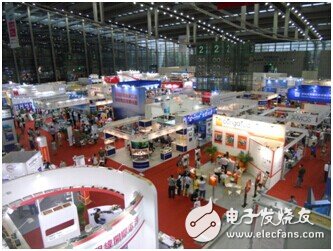On the morning of August 6, the third Industrial Computer and Embedded Systems Exhibition was held in Shenzhen International Convention and Exhibition Center. EVOC, Advantech, Freescale, Renesas, Fujitsu, Microchip, North China Industrial Control and many other domestic and foreign manufacturers participated. The products exhibited by the manufacturers are dazzling, involving industrial computers, industrial power supplies, wireless communications, human-computer interaction and other popular fields. However, in many fields, the most attractive to everyone is the smart home.
In the first half of the year, Google spent 3.2 billion to acquire the smart home company NEST, which made people stunned and made the smart home suddenly hot. Subsequently, Apple, Samsung, and LG announced the launch of their smart home platform. Domestically, Haier and Changhong built their own smart platforms. Haier is "married" with Apple and became the first Chinese manufacturer to access HomeKit. For a time, giants flooded into the smart home market as the tide rushed.

Qian Zhongwang, CEO of the China Interior Decoration Association Intelligent Committee, said to Zhong Zhonghong that there are many star companies in the domestic smart home field, such as Broadlink, yeelink, iKair, Ou Ruibo, etc. There are also a large number of smart home projects on some crowdfunding websites, but 95% of domestic smart home manufacturers introduce system-level products. Xiang Zhonghong continued to point out that Control4 is a well-known smart home manufacturer that makes system solutions abroad, but its annual output value is only 400-500 million US dollars. Google’s acquisition of Nest alone costs 3.2 billion US dollars, and even Nest acquires home camera surveillance. The startup company Dropcam used $555 million. Therefore, Xiang Zhonghong believes that in the next two to three years, the development speed of smart home products will gradually exceed the development speed of system products.
At present, smart home system products are in the field of a few giants, and their cost is high, which can be borne by non-small and medium-sized enterprises, and the system products lack imagination space and user viscosity is poor. Different smart home products, many startups have transformed traditional home appliances into distinctive smart products. These products embed sensors, MCUs, communication modules and corresponding mobile APPs to form a lightweight system. Focus on the user experience and provide users with personalized services. However, Xiang Zhonghong said that although smart home products will have a big development in the next few years, the single product is for the system, and the future single products and systems will be combined into one.
Another important development direction of smart homes in the future is the "cloud." As the data center of the Internet of Things and smart home, “cloud†is an indispensable factor in all smart industries in the future. In the daily use of smart homes, a large amount of data is generated. The “cloud†analyzes the data to understand the user's life habits, so that the smart home can make personalized adjustments for the users. But the reality is not as good as imagined. Whether in hardware or software, there is no unified standard and interface in the smart home field. The interconnection between home appliances and home appliances, home appliances and the Internet has become a problem. Some experts said that Google spent 3.2 billion to acquire Nest, which may not only focus on its smart home products, but the Internet of Things standard, which is intended to be established by Nest, Thread, with the power of "Thread", with Qualcomm, Intel and others. The Internet giant's IoT standards alliance has been higher.
At present, for consumers, the "smart" of smart homes may be somewhat simple, and the market lacks explosive products. However, the single product market is poised for growth, and the Internet of Things standards will also face a scuffle. At the same time, smart homes and traditional manufacturing industries will take some time to work together. Therefore, in the next few years, the smart home field will surely meet the market demand. The products will take the relevant industries to a new level.
The Led Emergency Inverter is a combination of a white high-quality ABS shell and an external lithium ion battery , which is small in size and easier to hide in the ceiling . This Emergency Conversion Kit is suitable for all external driver of LED lights in the wide voltage AC85-265V range , equipped with lithium ion battery that can be recharged up to 500 times , the emergency power supply has multiple protection functions , such as overcharge , over-discharge , short circuit protection , etc .

Led Inverter,Led Power Converter,Led Emergency Battery Driver,Emergency Light Conversion Kit
Jiangmen City Pengjiang District Qihui Lighting Electrical Appliances Co., Ltd , https://www.qihuilights.com